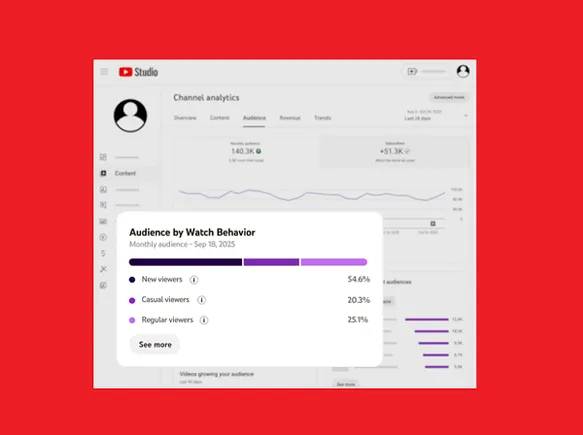The Biggest Differences Between the Steam Deck OLED and Steam Deck LCD
The Steam Deck OLED offers more than just a bigger, better display when compared to the Steam Deck LCD.The Steam Deck OLED offers more than just a bigger, better display when compared to the Steam Deck LCD.


Credit: Valve
The Steam Deck is one of the best handheld gaming consoles you can buy. While you used to only have to choose between different storage sizes, you now have two models to choose from: Valve recently announced the Steam Deck OLED to replace the original Steam Deck LCD, and it improves upon the original in many meaningful ways. But is the newest version worth the extra cash?
Steam Deck LCD specs vs. Steam Deck OLED specs
At first glance, it might seem like the new Steam Deck is just the old one with an OLED display. Sure, the OLED does make for a brighter, better display that’s slightly larger at 7.4 inches. But the new Steam Deck also comes with improved cooling, better battery life, and a slightly more efficient processor, all of which will be important when deciding whether you should grab the Steam Deck LCD while it's on sale, or hold out for the more expensive Steam Deck OLED.
Steam Deck LCD specs:
Display: 7-inch, 1280 x 800 X RGB display with 60 Hz refresh rate and typical brightness 400 nits
Processor: 7nm custom AMD APU
Ram: 16GB
Connectivity: Bluetooth, wifi
Storage options: 64GB eMMC, 256GB NVMe SSD, 512GB high-speed NVMe SSD (expandable with microSD)
Battery life: 40Whr batteryl two to eight hours of gameplay (content dependent)
Size and weight: 298mm x 117mm x 49mm, approx. 669 grams
Steam Deck OLED specs:
Display: 7.4-inch, 1280 x 800 HDR OLED display, with 90 Hz refresh rate and 1,000 nits peak HDR brightness (600 nits typical)
Processor: 6nm custom AMD APU
Ram: 16GB
Connectivity: Bluetooth, wifi 6E
Storage options: 512GB NVMe SSD or 1TB NVMe SSD (expandable with microSD)
Battery life: 50Whr battery; 3 to 12 hrs of gameplay (content dependent)
Size and weight: 298mm x 117mm x 49mm, 640 grams
Looking at these two side-by-side, there isn’t much of a difference as far as performance-based specs go. Sure, the chip is newer and more efficient, but it isn’t going to offer the same level of upgrades as changing out your processor on a full-sized desktop. In short, performance gains shouldn't be the reason you choose to upgrade to the Steam Deck OLED. But that's far from the whole story here.
Display and battery life
One of the biggest reasons to upgrade is indeed that display. A .4-inch increase isn’t a huge increase, but when you’re talking about playing on a handheld, every little bit helps. Additionally, the Steam Deck OLED’s display offers HDR options, as well as a much higher peak brightness. During SDR playback, the display is 200 nits brighter than the Steam Deck LCD (600 nits vs. 400 nits) and with HDR content, it can reach 1,000 nits. That means you can game even when you’re outside in the sun, something you might have struggled with with the original Steam Deck.
The new display also has a higher refresh rate (90 Hz vs. 60 Hz) though, to be honest, that isn’t something you’re going to take full advantage of when playing most AAA games on the Steam Deck.
Battery life is also another important factor. While the LCD model holds its own, the OLED does boast a slightly better battery life, which is something you might want to take advantage of if you travel a lot. Still, both devices will die quicker when playing the most demanding PC titles, so you never really want to be too far from a charger.
Price and storage options
The price of the Steam Deck you choose depends on what storage model you go with. Unfortunately, the OG Steam Deck's cheaper 64GB model isn’t available on the Steam Deck OLED. Instead, the OLED model only ships with 512GB and 1TB options, so you’re looking at paying more than the old prices for the cheapest Steam Decks on offer.
The new Steam Deck OLED starts at $549, and it goes up to $649 for the 1TB model. You can buy a Steam Deck LCD, on the other hand, for $349 for the 64GB model and $449 for the 512GB model. However, these prices are only discounted until Valve runs out of the older consoles. At that point, the Steam Deck OLED is your only option.
Internal improvements
But the display, battery life, and storage options aren’t the only changes the Steam Deck OLED brings to the table. The OLED model also offers better cooling, and comes with support for wifi 6E, making it slightly faster for downloads than the original Steam Deck LCD. That isn’t going to be hugely noticeable for most people, but as someone who has felt how hot the LCD model can get, having a cooler handheld is going to be really nice.
Other internal improvements here include upgraded memory, which provides less latency and better power management, as well as a third antenna that helps provide better Bluetooth performance when compared directly to the older Steam Deck LCD. Valve has also improved the audio setup, which should better audio performance overall.
In conclusion
There’s a lot to love about both devices, but if you haven’t already invested in a Steam Deck, I’d recommend going with the Steam Deck OLED for the future-proofing and overall minor improvements that make the latest model of Valve’s handheld stand out.
Don’t get me wrong. I’ve spent a lot of time with the Steam Deck LCD, and it’s still a perfectly capable device in both performance and display. But with the advent of the OLED model, the reasons to buy a Steam Deck have only gotten more meaningful.

 JaneWalter
JaneWalter 































